[ad_1]
“I will not sell to a man with a big belly,” declares Gyanshankul Singh.
As multifaceted as he is opinionated, Singh teaches wrestlers at the 490-year-old Swaminathan Akhara in Varanasi, in addition to being a certified strength coach, an arm wrestler and a self-confessed poet. He also makes traditional wooden fitness equipment that Indian wrestlers train with, like the mudgar, Hanuman gada, jori and sumtola. However, he is insistent that his “equipment is only for people who are into fitness. I take a lot of time to make each piece. The wood takes time”.
Similarly, akharas (a place of practice for Indian martial arts) are not for everyone. Traditionally a macho, male domain, they demand years of determination, sweat and perseverance. Singh began when he was 14. “Boys must start with rope climbing, swimming and Indian burpees. Only after three to four years can you swing the gada, then wrestle.”
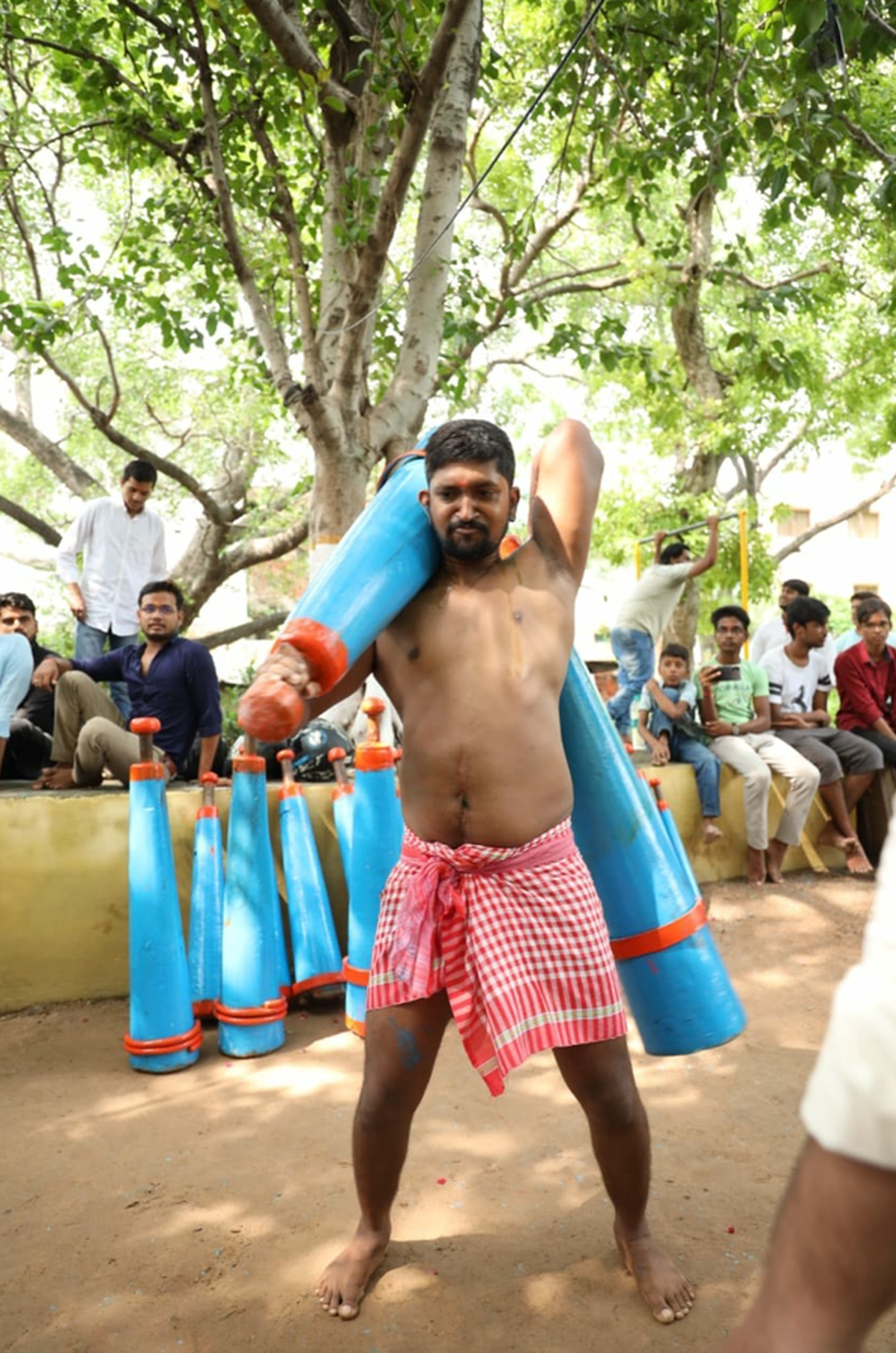
Gyanshankul Singh with mudgars
| Photo Credit:
Special arrangement
Yet, around the world, workouts built around ancient Indian fitness equipment, originally created for warriors and then wrestlers, are now being embraced by a cross-section of people in gyms, yoga studios and homes. While the original techniques, which date back thousands of years, are still at the heart of these movements, they have now been adapted for contemporary workouts and Zoom coaching.
Dutchman in a dhoti
Amsterdam-based Harbert Harte Egberts, better known by his Instagram handle, The Flowing Dutchman, has 390K followers who follow his powerful moves with heavy gadas, whether he is participating in Varanasi’s Naga Panchami (a day of snake worship), wielding bright orange mudgars in just a dhoti and rippling muscles, or teaching people how to train with Indian clubs across Europe with the Dutch Flow Academy, which he runs.
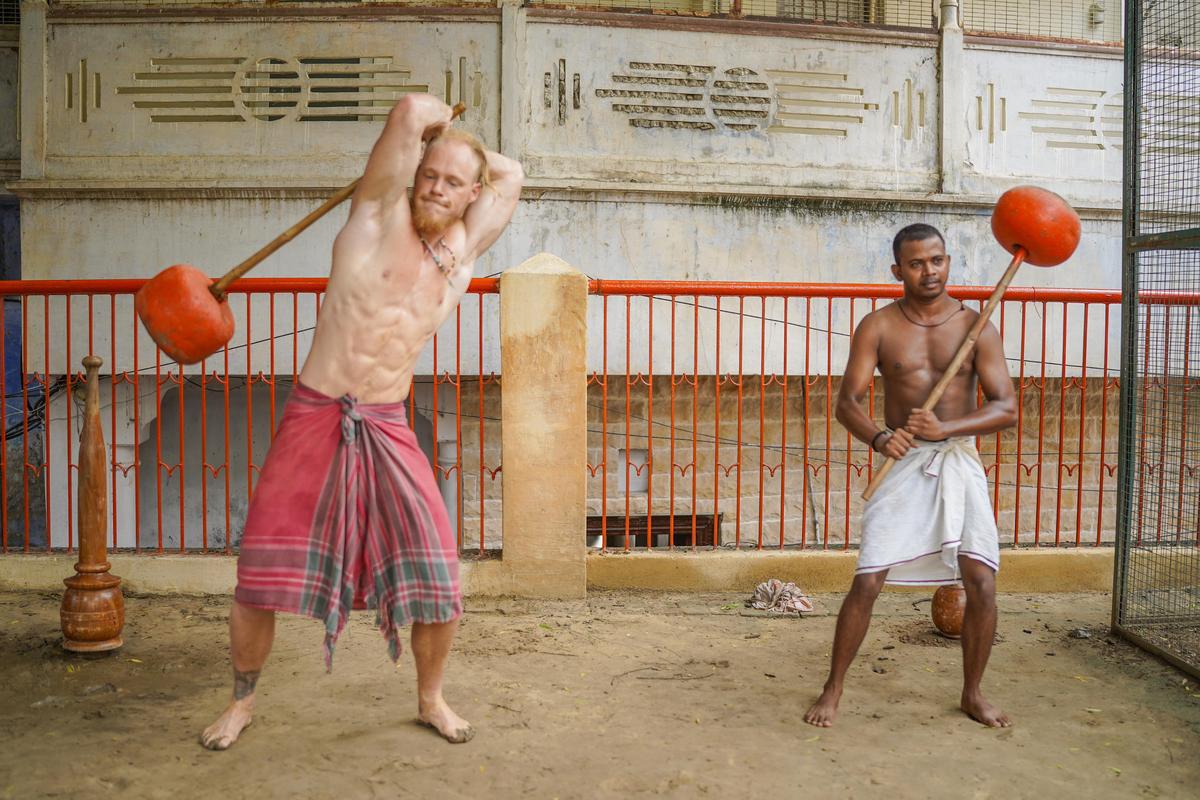
Harbert Harte Egberts at an akhara
| Photo Credit:
Special arrangement
Fascinated with India, Egberts has visited numerous times, most recently driving up the Himalayas on a motorbike, while listening to The Mahabharata on an audiobook. He learns from akharas, often wrestling in the mud in a langoti, so he can learn and demonstrate the history of this equipment in India.
“Traditionally, it’s a form of strength training for martial arts, in India and Iran,” he says, adding that “the practices got interpreted and modernised by western coaches… They added lunges, flow — whereas in India, they only do certain movements.” Women, who are traditionally not allowed into akharas (though that is beginning to change), tend to be drawn to these workouts. “They like the aspect of freedom and creativity,” he adds.
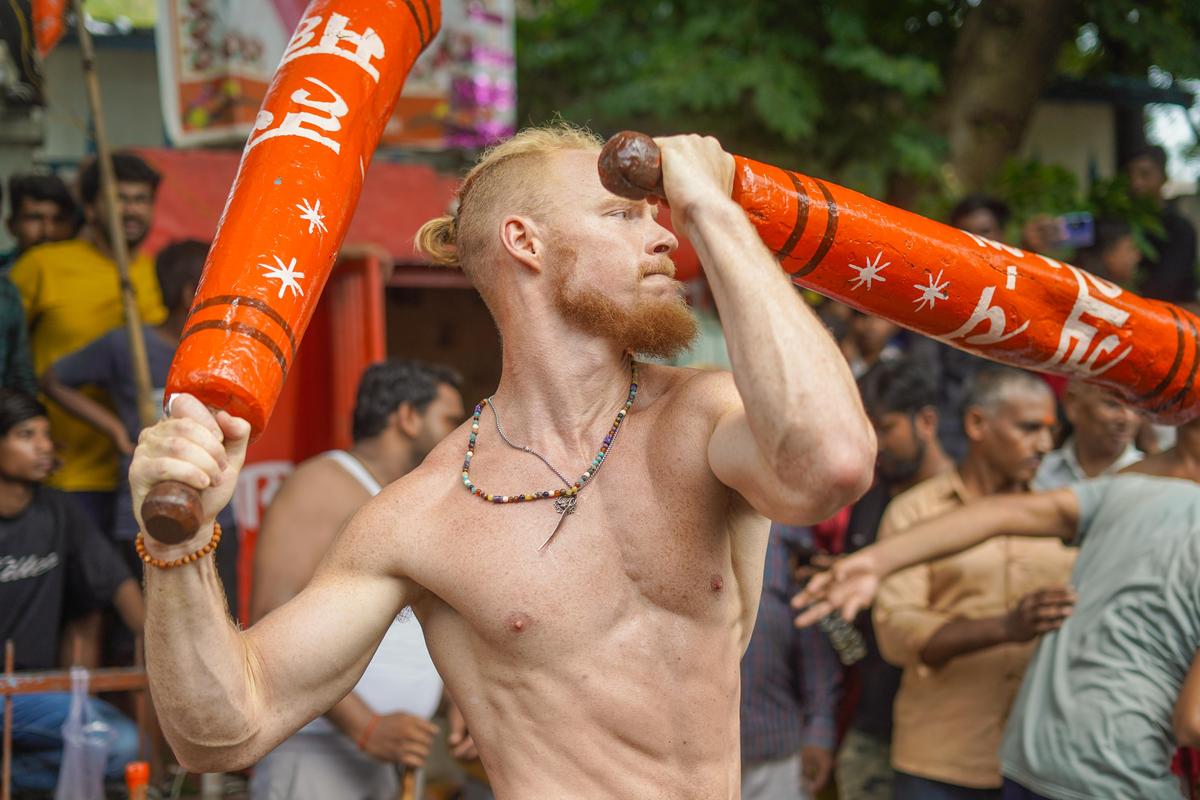
Egberts works out
| Photo Credit:
Special arrangement
Egberts started online training in 2020. These arts became especially popular with the online community during the COVID-19 pandemic, when people were looking for ways to work out at home. “I have taught courses in Mongolia, in Kazakhstan, you name it. There is interest everywhere in the world,” he says, adding that he also does instructor training, and has taught more than 1,000 coaches so far.
“The whole idea of earning money through this is a western notion,” he says with typical Dutch candour. “I get hate from people saying you learnt this in India and are now selling it to the western market, but there is a way we have evolved the practice, making it a viable, reproducible model. It’s a blend now, and that’s the truth. The way it’s being done in an akhara, you can’t do that in America — that is impossible to copy.”
Old school fitness, but with swag
In India too, young dynamic coaches are building a following by showing people how to swing these tools. On a remote farm in Thrissur, Nithin Jayaraj, better known as the ‘Shredded Farmer’ on Instagram (66.4K followers), shoots idyllic videos of workouts at the farm, with frequent cameos by his seven dogs.
Explaining how he grew up in Dubai, where he was into fitness and Sly Stallone movies, he says he was always fascinated by how fluidly farmers worked and climbed trees when he visited his grandparents in Kerala. “I realised after years at the gym, I just looked good but had no functionality,” he says.
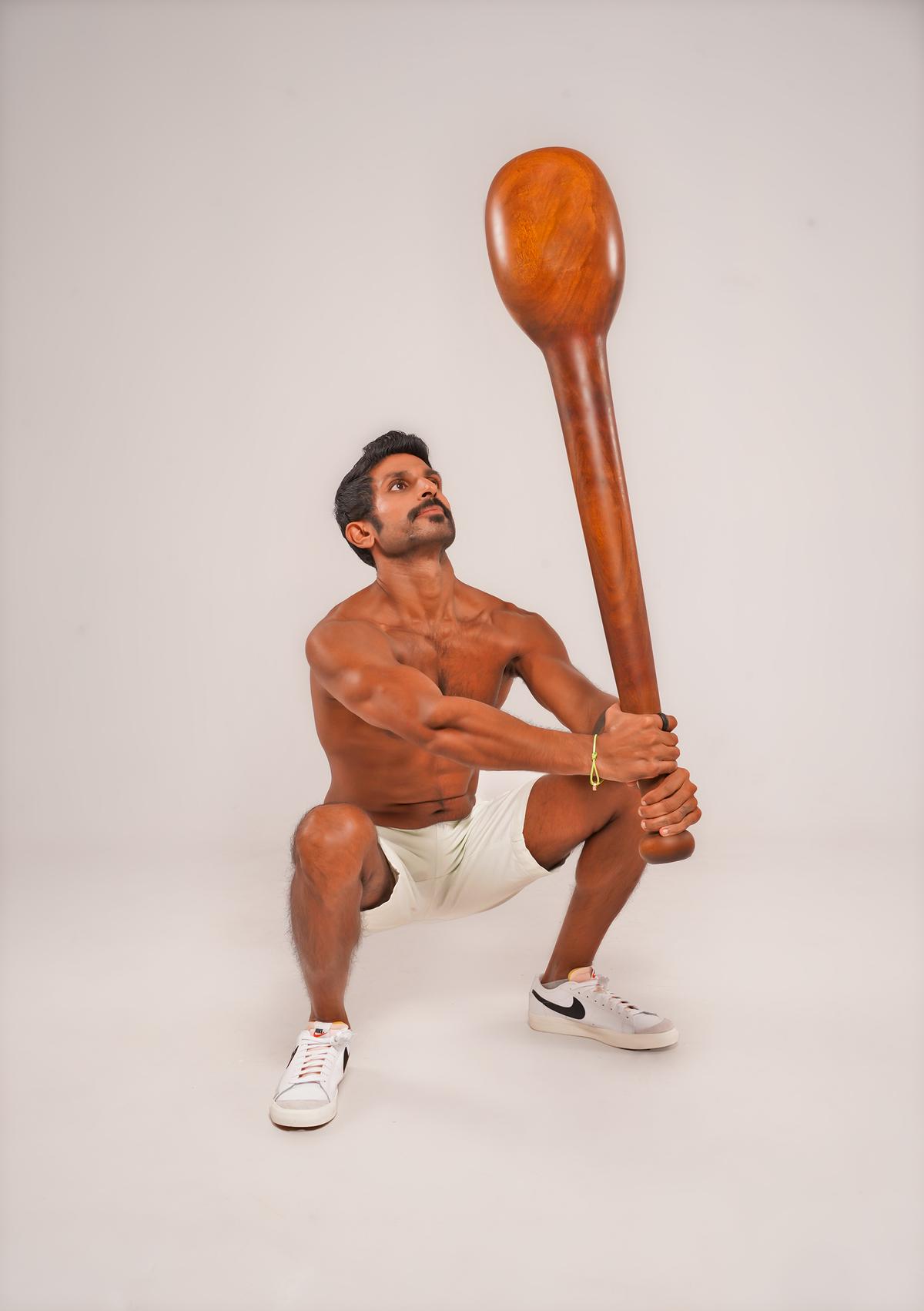
Nithin Jayaraj with a gada
| Photo Credit:
Special arrangement
Then he saw Bollywood blockbuster Dabangg, with Sonu Sood wielding a mudgar. “It’s more about using momentum than muscle,” he says, adding with a smile, “I’m trying to bring back old school fitness with swag. Now, the young need swag.” After teaching himself with YouTube videos and a sledge hammer from a Dubai CrossFit Box gym, Jayaraj moved to India in 2012. He learnt carpentry from a neighbour during the lockdown, in addition to doing online courses on anatomy, Ayurveda and iPhone photography. It all came together when he started to make mudgars for students, who he teaches over Zoom three times a week.
“It spread like COVID honestly,” he says wryly, discussing his classes. “Each person told 10 [others]. I have taught about 7,000 students in the last five years.” About 60% of these are women, possibly inspired by his lithe muscles. “My arms, my body, my muscle definition… they make people believe in what I do.” Jayaraj practises with the mudgar, gada or sumtola every day. “Some people aim at getting 10,000 steps every day. I aim at 10,000 reps,” he says.

Jayaraj’s collection of equipment
| Photo Credit:
Special arrangement
Mumbai-based Gulzar Govewalla, met Jayaraj when her yoga teacher organised a workshop with him, and signed up for classes. She takes them two to three times a week and says she finds it “quite an intense and good workout”. At 56, she says her focus is “building muscle and being strong,” and she enjoys the mudgar work as it is a fresh, and hence, challenging routine.

“Most of the time, they [gadas, mudgars] are between 4 and 6 kilos, so they’re not too heavy. They give you good body strength and flexibility, and if done right, also work on your core. I noticed people placing orders for them during the IPL. I have a feeling they’re going to get more mainstream in a year or two.”Madhu ThottappillilSports medicine specialist with the Chennai Super Kings
Made for different audiences
While the workout currently draws a lot of women students, Kelly Manzone in Connecticut is one of the few prominent female coaches. Known as kellsbells88 on Instagram (155K followers), she travels across the U.S. taking workshops using the gada, jori and Indian clubs. She explains how the swings are healthy for your body and brain. “It helps to create a more resilient body, and this fills in the gaps of mainstream fitness,” she says, adding, “It builds shoulder mobility, resilience in the back, and grip strength.”
Kelly Manzone with her clubs
| Photo Credit:
Alex Lopes
She says using the clubs also has a therapeutic effect. “When you are swinging in circular patterns, you get into a meditative state of mind — it is very relaxing.” On the verge of turning 45, Manzone says, “I’m technically middle aged now. I’m injury free, I’m strong and healthy. A lot of that comes from using ancient practices.”
Discussing the balance between traditional ways and the more modern flow techniques, she says, “You can still hold and appreciate the tradition, while structuring it for different audiences.” It’s been especially helpful for people who may never have had a chance to encounter the practices in their regular lives: women in their 50s and 60s.
Like many of the serious practitioners, Manzone gets her equipment from India. Companies selling them are mushrooming as demand increases. The Great Indian Workout, for instance, offers equipment for ‘beginner, intermediate and pro’. Their pro or ‘seasoned warriors of wellness’ category includes a 16 kg Hanuman gada, 20 kg mudgar, 25 kg sumtola. There’s Satva Fit, which includes an app offering Yoga, breathwork and Callisthenics in addition to club workouts. Handle Bar offers customised gadas and mugdars. And Tagda Raho, promoted by M.S. Dhoni (which will no doubt turn up on your Instagram feed after you read this story), offers tools for what they call the ‘OG Indian workout.’
Jalal Pagarkar, who runs Indian Made Mudgar from Navi Mumbai, says he began working out with clubs during COVID and found it beneficial. In 2020 he started making them, and now works with a team of six craftsmen, shipping to about 10 countries. “My buyers are varied, young people from 20 to 30. But also men who are 40-plus and want to improve their fitness,” he says, adding that the main challenge is a shortage of trainers. His gadas and mudgars are made with ironwood, rosewood and teakwood, and costs depend on the wood and weight. (A well-made 2 kg mudgar can cost between ₹1,500 and ₹3,000.)
Gadas from Indian Made Mudgar
| Photo Credit:
Special arrangement
Sumtolas from Indian Made Mudgar
| Photo Credit:
Special arrangement
Singh, meanwhile, sells his equipment to sports companies in the U.S., Canada and Singapore. However, he adds that it’s “good and bad” that these workouts are getting popular. “Good because they are showing Indian traditional workouts to the world. But bad if it is not the correct form.”
Despite his concerns, he teaches constantly. “All the foreigners who come here — from Hungary, Italy, Chile, China, Russia — learn from us,” he says, adding that he does, however, hold back some information. “I have visited 17 states of India to explore akhara workouts. Did you know there are 64 swinging styles? There is so much still hidden from our eyes. I do not teach it all. We have to keep something to ourselves.”
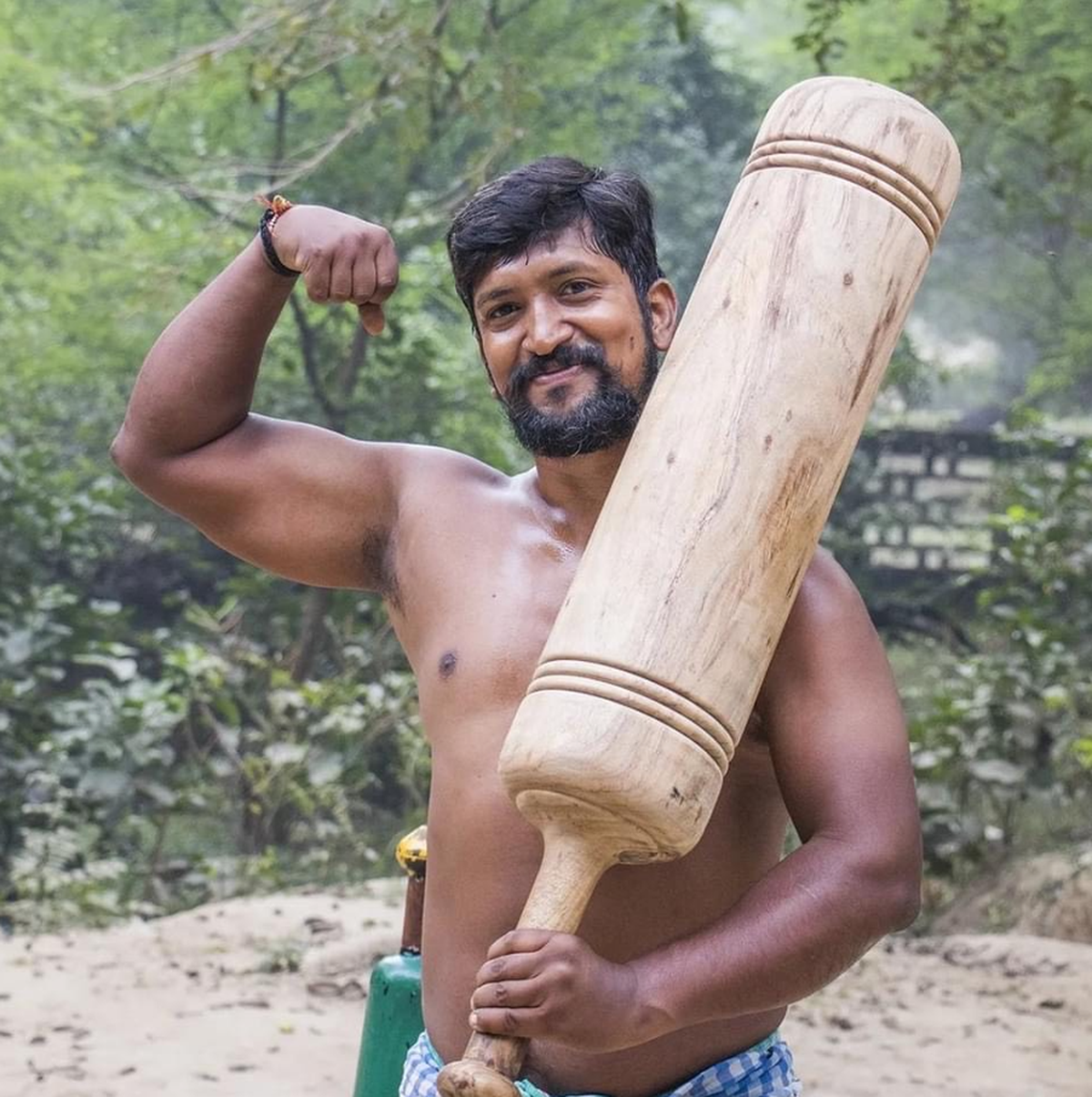
Gyanshankul Singh
| Photo Credit:
Special arrangement
In Perth, Australia, 74-year old Paul Wolkowinski powered through chemotherapy swinging his clubs every day. “It kept me going. I can’t tell you the respect I have got for this,” he says, crediting the workout with giving him “mobility, coordination, flexibility and proprioception”.
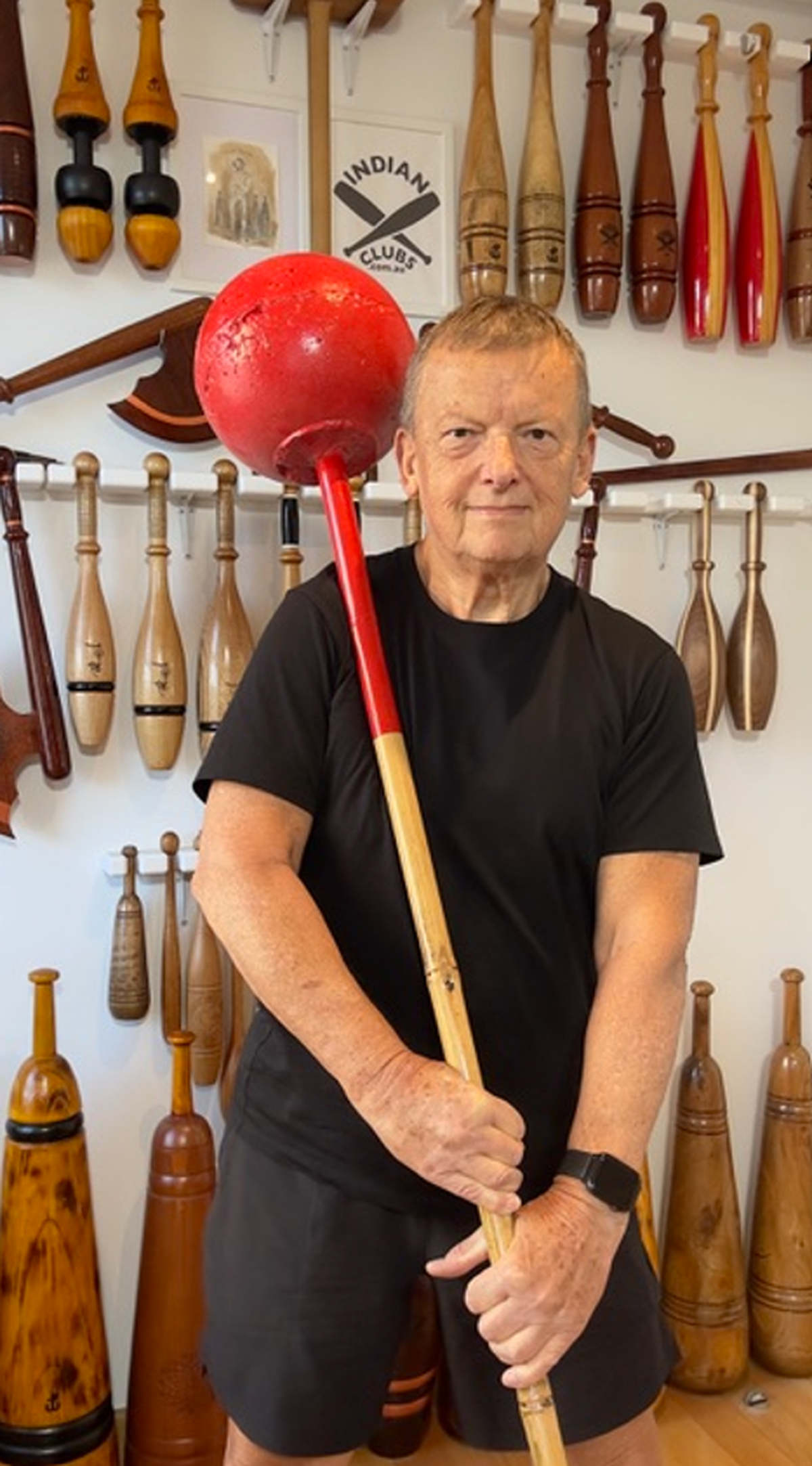
Paul Wolkowinski
| Photo Credit:
Special arrangement
One of the original western practitioners of the equipment, he is a mentor to a lot of coaches and has travelled extensively to do workshops. “I have taught in Hawaii, Los Angeles, Texas, New York, the U.K., Denmark, Poland…” he says, adding that he has travelled to India many times to learn from the akharas. “While there are more western swinging styles, to me, the akhara movements are the most important,” he concludes.
shonali.m@thehindu.co.in
Published – September 27, 2024 01:13 pm IST
[ad_2]
Source link





